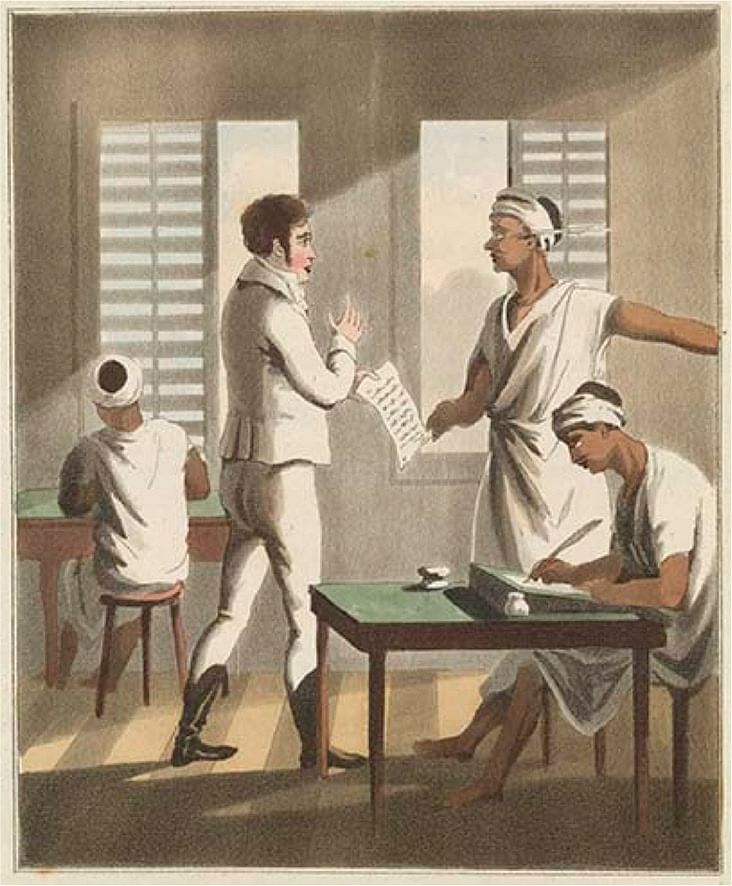Winners of the 2019 RIBA President’s Medal for Research
By Justine Testado|
Wednesday, Dec 4, 2019

Related
Since 2006, the RIBA President's Medal for Research competition has distinguished top-notch architectural research projects by students, academics, and practitioners around the world. Just tonight, the Institute revealed the winners for 2019, who responded to the annual theme of Building in Quality.
The grand prize, the President's Medal for Research, went to Dr. Tania Sengupta from the Bartlett School of Architecture for the project, “Papered Spaces: Clerical Practices, Materialities and Spatial Cultures of Provincial Governance in Bengal, Colonial India, 1820s-1860s”. Some of the themes Dr. Sengupta’s research covers include the localization of global culture, and South Asian architecture and urbanism. Her project also won the category award in History and Theory.
Awards were given to three other projects for the categories of Building in Quality; Cities and Community; and Design and Technical. Two projects also received a Commendation.
Check out the projects below!

President's Medal for Research winner and History and Theory Award winner: Tania Sengupta, Bartlett School of Architecture, UCL for “Papered Spaces: Clerical Practices, Materialities and Spatial Cultures of Provincial Governance in Bengal, Colonial India, 1820s-1860s”
Project excerpt from the author: “This research focuses on the architecture, spaces and material culture associated with colonial paperbureaucracy in Bengal. It argues that the paper-based and writing-oriented habitus of colonial administration also mandated a chain of related materialities and spatialities – from paper records to specific types of furniture, spaces and architectures of colonial governance. Focusing on the colonial cutcherry [office] complex that formed the nerve-centre of zilla sadar [provincial administrative] towns of Bengal, I look here at the roles, spatial relationships and design developments of such ‘papered spaces’ as record rooms and clerical offices.”
Commenting on Papered Space, jury chair Dr Banka Dimitrijevic commented: “This in-depth study expands the scope of research on British colonial architecture in India by focusing on the typology of administrative buildings which housed thousands of paper files containing information related to the revenue collection in Bengal in 1820s-1860s. The analysis of layouts of several administrative offices (surveyed by the author) and various secondary sources are successfully used to depict the everyday life of the workers and their interactions with the population and suppliers. Dr. Sengupta’s research findings significantly contribute to a better understanding of how the paper-based revenue collection system influenced the architecture that served it.”

Building in Quality winner: Rosica Pachilova & Dr Kerstin Sailer, Bartlett School of Architecture, UCL for “Providing Care Quality by Design: A New Measure to Assess Hospital Ward Layouts”.
Project excerpt: “Which hospital ward layout works best? In the past, one response to this question has been to design layouts that minimise walking distances of healthcare workers and increase their time spent with patients. However, new research suggests that good face-toface communication between doctors and nurses crucially impacts the health and safety of patients. Taking this into account, this research proposes a new single measure called Spaces for Communication Index (SCI). It assesses communication opportunities arising from the layout, and shows that a high index is associated with the provision of good healthcare.”

Cities and Community winner: Dr. Mirna Pedalo, Goldsmiths, University of London for “The Gulf in Bosnia and Herzegovina: An (Un)Intentional Consequence of Peace”.
Project excerpt: “Through the analysis of the surge in the real-estate development in post-1990s-war period in Bosnia and Herzegovina this research project aims to map the ways in which the country has been striving to position itself in relation to the movements of global capital. The project primarily scrutinises the Dayton Peace Agreement in its role as a state-building mechanism; a distinct and crucial element that sets this phenomenon apart from its global counterparts. In order to tackle and unpack the complexity of this condition a blend of different methodologies has been chosen.”

Design and Technical winner: Oliver Wilton, Bartlett School of Architecture, UCL & Matthew Barnett Howland, CSK Architects for “Cork Construction Kit”
Project excerpt: “This article reports on research progress to develop a radically simple new form of solid, dry-jointed biorenewable construction, made of expanded cork blocks and engineered timber. The aim is to develop a viable construction system with outstanding whole life performance using plant-based materials, that can help to sustain biodiverse landscapes, to create buildings with exceptionally low whole life carbon emissions. This system uses building blocks made of cork forestry waste, that interlock for quick and easy assembly, creating buildings that are low energy to inhabit and simple to disassemble at end of building life for re-use. This system presents the opportunity to investigate an architectural language of cork stereotomy which is new and at the same time familiar, being a progressive reimagining of historic dry-stone construction.”
COMMENDATIONS:
Building in Quality: Tumpa Husna Yasmin Fellows, Mannan Foundation Trust & University of Westminster, UK for “Improvised architectural responses to the changing climate; making, sharing and communicating design processes.”
Cities and Community: Ivan Valin, Xiaoxuan Lu, Susanne Trumpf, The University of Hong Hong, Hong Kong for “Between, below, behind: An ontology of small urban spaces in Hong Kong”

RELATED NEWS RIBA announces 2018 President's Medal student recipients

RELATED NEWS Winners of the 2017 RIBA President's Medals for Research


Share
0 Comments
Comment as :